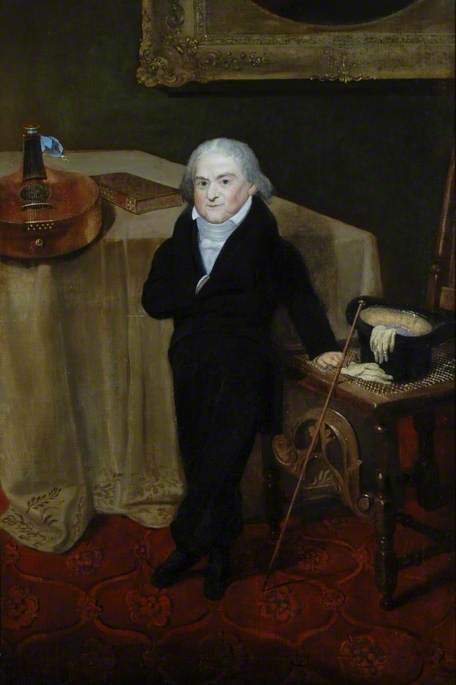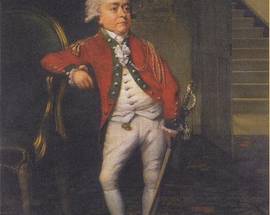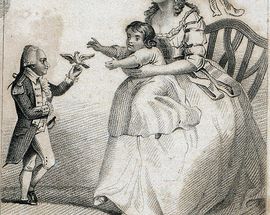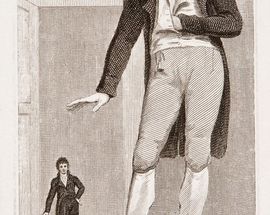It seems back in those days it was as fashionable to have a dwarf as it is to have a tiny handbag and a lapdog today and Józef became a hot commodity at aristocratic dinner parties. When he was fifteen, and a mere 64 centimetres, the Countess took him to visit the royal court in Vienna where he subsequently hob-nobbed with Viennese high society. While perched on the knee of Empress Maria Theresa he remarked: ‘There is nothing so wonderful as to see such a little man on the lap of so great a woman’. The flirty remark delighted the Empress and moved her to present him with her diamond ring. The ring was too big for Boruwłaski so the Empress called on a young princess to award him with her ring instead. That princess was a six year old Marie Antoinette, who would later achieve infamy at the business end of a guillotine.

Photo: Durham County Council (Durham City)
Although apparently a keep-fit fanatic and tee-totaller, Boruwłaski nonetheless enjoyed the Parisian highlife, attending masked balls, pageants and banquets. An incurable romantic, Boruwłaski enjoyed flirting, and we are assured that his romantic lustings were often mutual. However when Boruwłaski fell in love with the Isalina Barbutan, the Countess’ domestic companion, the Countess threw him out in a rage. Poland’s King Stanisław August Poniatowski intervened, gave Boruwłaski a handsome allowance, and with royal approval the Pole later married the quite normal-sized subject of his desire.
Using royal letters of introduction the dwarf was able to tour the courts of Europe and Turkey, entertaining the rich with his razor wit, dapper dance moves and virtuoso violin skills. One tour of Britain paired him with the Irish giant Patrick Cotter O'Brien, next to whom Boruwłaski did not surpass his knee. The team proved to be a hit with the paying public.
Siring several healthy children with his wife, and with money to his name, Boruwłaski eventually published The Memoirs of Józef Boruwłaski and took retirement in the English town of Durham where he has gone down in folklore as The Little Count. The dwarf lived to see 97, and although happily married, one anecdote from his Durham days reveals his wife would often place him on the mantelpiece if he ever irritated her. He is buried in Durham Cathedral, under a slab with the initials J.B. To this day, in Durham Town Hall, personal items belonging to Boruwłaski are on display, including his clothing!








Comments